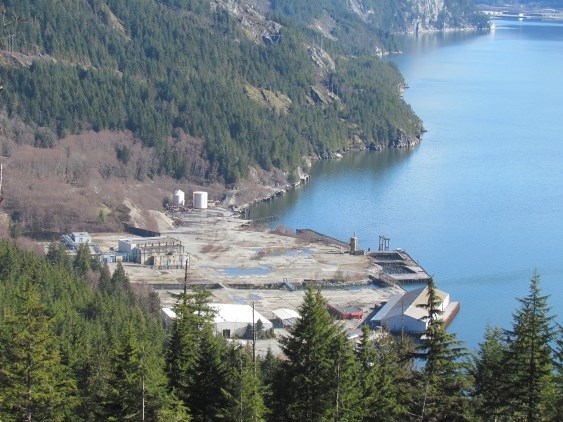There's finally news on the Woodfibre LNG federal environmental assessment process.
The company has received word from the Canadian Environmental Assessment Agency (CEAA) that it's done a preliminary analysis of the upstream emissions associated with Woodfibre LNG, according to Jennifer Siddon, senior manager of corporate communications with Woodfibre.
The analysis includes emissions associated with the pipeline and the natural gas extraction in the north from the project. Previously, the requirement covered direct emissions, such as from the site, transportation and power, according to Siddon.
“Minister of Environment and Climate Change [Catherine McKenna] asked the Canadian Environmental Assessment Agency to provide her with information about upstream greenhouse gases associated with our project,” Siddon said via email to The Squamish Chief. “They did a report, which will soon be made public – likely through their website – through a three-week public comment period.
The report will help inform the minister in her decision on our project.”
A start date for the comment period has not yet been set.
The proposed LNG export facility has been awaiting a federal decision after receiving conditional provincial and Squamish Nation approvals in 2015.
Byng Giraud, Woodfibre LNG vice-president of corporate affairs, acknowledged the delay for further study was disappointing, but said he and others in the company aren’t daunted by further analysis.
“It is new. Investors don’t like rule changes at the last moment,” he said. “But we aren’t really afraid of it. It is just more time and more work, but we will do that.”
Giraud said the upstream analysis is part of the newly elected federal government’s principles announced last week by Natural Resources Minister Jim Carr and McKenna for projects under review. According to the announcement, decisions will be based on science and traditional indigenous knowledge; public input will be sought; there will be greater consultation with First Nations; and an assessment will be done on greenhouse gas emissions resulting from projects, directly and indirectly.
“The first four don’t really apply to us because we have already done most of those things,” Giraud said.
He isn’t sure how long a final decision will take but guessed another three months or so, and he added he doesn’t expect it will have impact on the project’s ultimate timelines. “It should be fine,” he said.
In the meantime, Woodfibre LNG has commissioned further herring surveys to fulfill conditions of the Squamish Nation and the B.C. Environmental Assessment Office related to the proposed liquefied natural gas facility’s cooling processes, he said, and the company is assessing some cost-saving measures.
“We’ve gone back to our engineering firms, gone back to our suppliers – take advantage of the market right now, with lower oil prices, people are sharpening their pencils, so we are trying to take advantage of that,” he said.
“We’re still going forward, the ownership is still committed, the team is still committed, so we will just get through this.”




